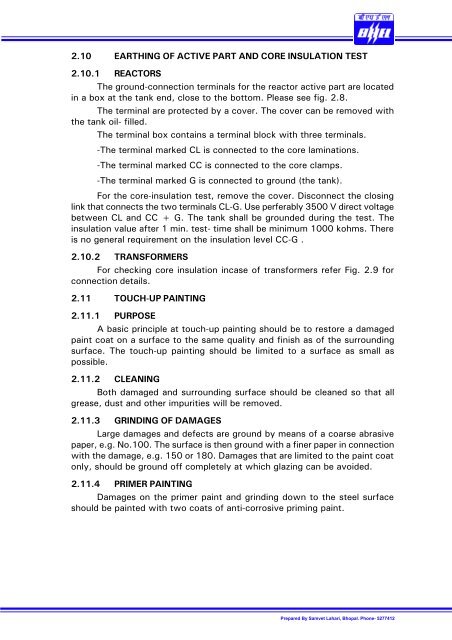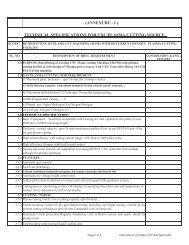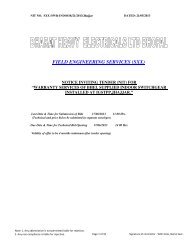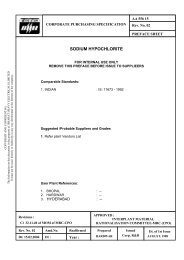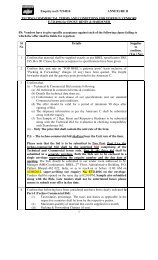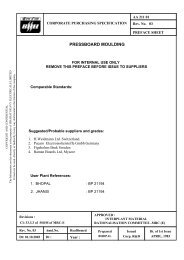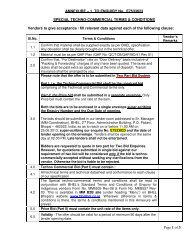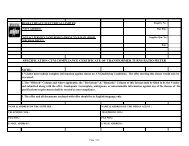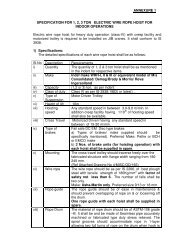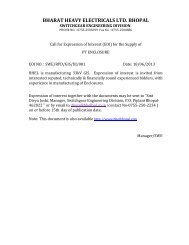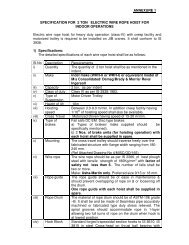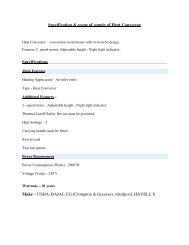instruction manual - BHEL Bhopal
instruction manual - BHEL Bhopal
instruction manual - BHEL Bhopal
You also want an ePaper? Increase the reach of your titles
YUMPU automatically turns print PDFs into web optimized ePapers that Google loves.
2.10 EARTHING OF ACTIVE PART AND CORE INSULATION TEST<br />
2.10.1 REACTORS<br />
The ground-connection terminals for the reactor active part are located<br />
in a box at the tank end, close to the bottom. Please see fig. 2.8.<br />
The terminal are protected by a cover. The cover can be removed with<br />
the tank oil- filled.<br />
The terminal box contains a terminal block with three terminals.<br />
-The terminal marked CL is connected to the core laminations.<br />
-The terminal marked CC is connected to the core clamps.<br />
-The terminal marked G is connected to ground (the tank).<br />
For the core-insulation test, remove the cover. Disconnect the closing<br />
link that connects the two terminals CL-G. Use perferably 3500 V direct voltage<br />
between CL and CC + G. The tank shall be grounded during the test. The<br />
insulation value after 1 min. test- time shall be minimum 1000 kohms. There<br />
is no general requirement on the insulation level CC-G .<br />
2.10.2 TRANSFORMERS<br />
For checking core insulation incase of transformers refer Fig. 2.9 for<br />
connection details.<br />
2.11 TOUCH-UP PAINTING<br />
2.11.1 PURPOSE<br />
A basic principle at touch-up painting should be to restore a damaged<br />
paint coat on a surface to the same quality and finish as of the surrounding<br />
surface. The touch-up painting should be limited to a surface as small as<br />
possible.<br />
2.11.2 CLEANING<br />
Both damaged and surrounding surface should be cleaned so that all<br />
grease, dust and other impurities will be removed.<br />
2.11.3 GRINDING OF DAMAGES<br />
Large damages and defects are ground by means of a coarse abrasive<br />
paper, e.g. No.100. The surface is then ground with a finer paper in connection<br />
with the damage, e.g. 150 or 180. Damages that are limited to the paint coat<br />
only, should be ground off completely at which glazing can be avoided.<br />
2.11.4 PRIMER PAINTING<br />
Damages on the primer paint and grinding down to the steel surface<br />
should be painted with two coats of anti-corrosive priming paint.<br />
Prepared By Samvet Lahari, <strong>Bhopal</strong>. Phone- 5277412


